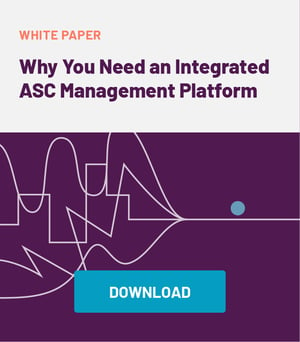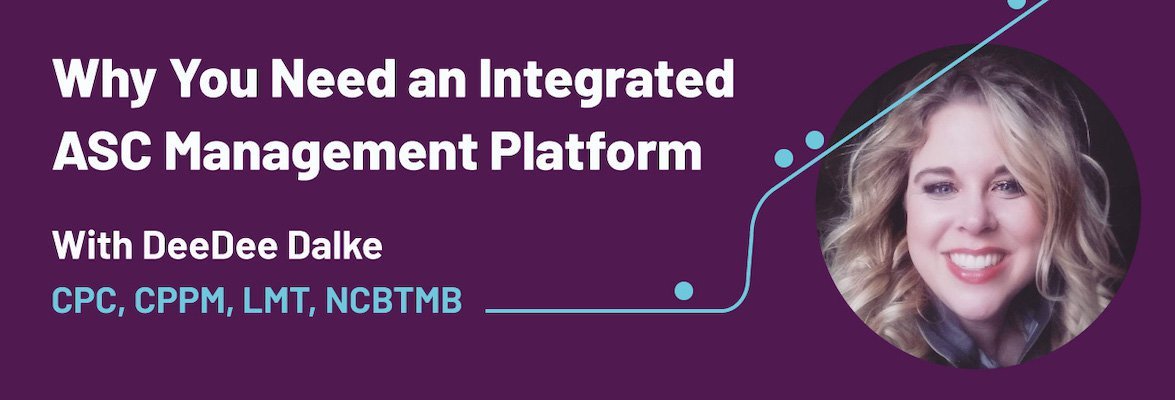
- ASC Operations, Nursing Leadership
- BY: DeeDee Dalke, CPC, CPPM, LMT, NCBTMB
- May 14, 2019
Whether you hold them monthly or quarterly, ASC board meetings require equal parts preparation and execution. Well, sort of. The 90-120 minutes you spend (we’ll get to meeting length in a bit) running a board meeting is actually the tip of the iceberg. Planning and preparation is actually where you spend most of your time. But don’t worry — after you get the hang of it, it won’t take too long. We’ve plotted out the key steps to help you prepare in the most time-sensitive manner possible. After all, you do have a surgery center to run. We've broken it down into 7 key points for you:
1. Check Your Governance Requirements
You can’t have a successful board meeting if you don’t know what your governance requirements are. Every ASC is structured differently. Some are standalone/wholly physician owned centers. Others are part of a hospital system. Still others might be part of a larger enterprise organization.
The operating agreement, medical staff bylaws and any governing body bylaws generally define the governance requirements for an individual ASC. Appendix L in the Centers for Medicare and Medicaid Services certification guidelines, as stated earlier, also provides governance requirements for CMS-certified centers. The Accreditation Association for Ambulatory Health Care has its own set of management practices needed to maintain your center’s AAHC certification. Finally, contact your state-level regulatory agencies that impact your ASC. Check out these references and understand what’s required.
2. Practice Your Best Practices for Meeting Organization
 Many ASCs partition their meetings into sections: 30 minutes for peer review, a member level meeting (usually 45 minutes) that touches on top line financials, case reviews, quality measures, safety reporting and the like, and finally, an executive committee meeting. The executive meeting moves through the decision-based items: things like equipment purchases, staffing and credentialing. If the ASC meets quarterly, agenda items tend to reflect the seasonality: the fourth quarter meeting is usually devoted to finalizing next year’s budget, and the first quarter meeting reviews financial performance from the previous year.
Many ASCs partition their meetings into sections: 30 minutes for peer review, a member level meeting (usually 45 minutes) that touches on top line financials, case reviews, quality measures, safety reporting and the like, and finally, an executive committee meeting. The executive meeting moves through the decision-based items: things like equipment purchases, staffing and credentialing. If the ASC meets quarterly, agenda items tend to reflect the seasonality: the fourth quarter meeting is usually devoted to finalizing next year’s budget, and the first quarter meeting reviews financial performance from the previous year.
No matter how you structure your meetings, observe best practices for meeting organization:
- Agree on a consistent time, date, and frequency. Schedule them for the entire year.
- Distribute reminders one-week prior.
- The team that leads board meetings — an executive committee, for example — should meet a few days earlier to review the agenda, probe for items that will take the most time and/or are most sensitive, and develop appropriate strategies to steer them through the meeting.
- Distribute the agenda, financials, quality reporting and any other supporting materials needed for the meeting. Members should have received meeting minutes soon after the previous meeting, but you may want to re-distribute with the rest of the packet. Try to get the packet out as soon as possible after the leadership team has finalized the agenda, and make sure everyone receives their copy.
- Develop a new member orientation packet and update it frequently, based on how often board members rotate on/off the board.
Some ASCs use “consent” agendas to streamline board meetings. This batches together routine financial, business and clinical reports into a single agenda item that can be approved in one action, thus saving valuable time for the most important issues.
3. Get Your ASC’s Data Analytics In Order
Most of the reporting reviewed in a board meeting falls into one of four categories: financial, quality, risk management and credentialing. While the temptation to examine every single data point generated is great, board members can easily become overwhelmed — not to mention the besieged administrator usually charged with developing the reports. Decide which data points you are going to consistently report on, and what allowances you’re going to make for data that is specific to the particular meeting at hand.
For ASCs with a platform that combines clinical and business operations, gathering reports for board meetings can include
Sample data points:
- Meeting minutes from quality and other committee meetings
- Benchmarking data with monthly, yearly and future comparisons (i.e., on-time starts, average op-times, cancellations day of surgery/cancellations 24 hours prior to surgery)
- Financial benchmarks, such as per case cost, per case revenue, payor mix percentages, productivity by provider, revenue per procedure type, coding or billing denials, etc.
One ASC administrator detailed her data preparation as follows:
“My framework starts with the basics: what CMS, ASCA, AAAHC require: the basics include ASA, types of procedures, Day Of Surgery (DOS) cancellations, the "wrongs" (site, surgery...), Code Blue, …Transfers, Medication reactions & errors, SSI, return to surgery within 30 days, and ER visits within 48 hours. Then I add the monitoring we have incorporated from previous studies: timeout, Safe Injection Practices, antibiotic compliance, normothermia, and narcotics administered in PACU.’
Investing in a center management platform that combines clinical and business operations makes it easy to gather this kind of data. What’s more, the analytics they generate enable more sophisticated reporting to gain even greater insight into center operations, profitability, quality and other components of a successful surgery center.
4. Get Physicians Involved
Whether they are board members or not, physicians drive the ASC bus. Getting them involved at the board level is critical for any center’s success. Whether it’s reviewing preference cards at the board meeting to draw attention to the wide variance in medical supply costs, as one ASC did, or rallying their fellow surgeons to improve their scheduling practices, they need the bigger picture that board membership brings.
5. Run the meeting or it will run you
Board meetings are to summarize and gain consensus on results from other committee meetings. They should have a hard stop at the 1.5 or 2-hour mark, depending on their frequency. If some matters go unresolved, it’s often wiser to map towards a solution than to spend extra time trying to resolve it on the spot.
Know your board. Find out what they expect from a board meeting, and tailor the meeting to fit their expectations. Identify, for example, the detail-oriented executive or the overly talkative physician who could hijack a meeting. Stay in the driver’s seat and steer them away from taking too much time on a specific issue. Nursing and time management are two disciplines that come in handy to keep the meeting on task.
6. Not Too Many Details
Focus on the discussion, not the background information at meetings. The board should already know the details. Keep it high level. If its bad news, let them knowahead of time, but be prepared with a series of recommended options to manage the situation. If, for example, the center is at risk of losing its AAAHC certification, now is not the time to ask ‘What do you think we should do?’
Of course, not every board member will go along with this approach. Some may not have reviewed the background materials thoroughly. Others will take the opportunity to expound on a particular issue or opinion they are passionate about. Again, this is the time to assert control of the meeting’s direction. Remember: discuss and decide. Politely steer them towards those things that have a discussion and/or decision point.
7. Go paperless
The last thing board members want to do is lug a board notebook to each meeting. As much as possible, convert paper reports, charts, and data summaries to digital. You’ll save on paper costs, be able to cross-reference and link topics, conduct search, and make short work of tedious analysis. If you have a platform that integrates EHR and business operations (like ours!), running reports shouldn’t take days.
To make them even more effective, prioritize by color — specifically, green, yellow and red (GYR). Remember the Urgent-Important decision making matrix? Priorities and scorecards coded given the GYR treatment quickly alert readers to things that aren’t going well and demand top priority.
Going paperless also gives everyone a break from the monotony of spreadsheets. If your paperless system supports it, take a break from the spreadsheet and build out some of your reporting into easier to read dashboards or infographics. To paraphrase information designer Edward Tufte, using alternative data visualizations gives the viewer the greatest amount of information in the shortest time with the least amount of ‘ink’ in the smallest space.
A Note on Minutes
Meeting minutes aren’t rocket science, but they are the official record of decisions made and actions taken by the board. They should reflect every action that was taken and include some background information that makes sense of the action. Keep them specific but with only the most pertinent details related to the action.
As much as possible, distribute them within a day or two of the meeting. Approval of minutes should wait until the next meeting, but if board members have questions, or if the minutes point up an issue that needs attention, now is the time to resolve it while everyone’s memory is still fresh.
Board meetings should do more than fulfill governance requirements. They are critical for getting a true assessment of progress, and to help make important strategic and financial decisions. The Simplify ASC platform has the most powerful reporting and business intelligence tools you have ever seen. Simplify’s enterprise reporting seamlessly unifies and consolidates reports with incredible ease. It’s ready to go for one or multiple locations. Board meetings will run at peak efficiency if you invest in tools to make meeting preparation a breeze.
Ready to simplify prepping for board meetings?

